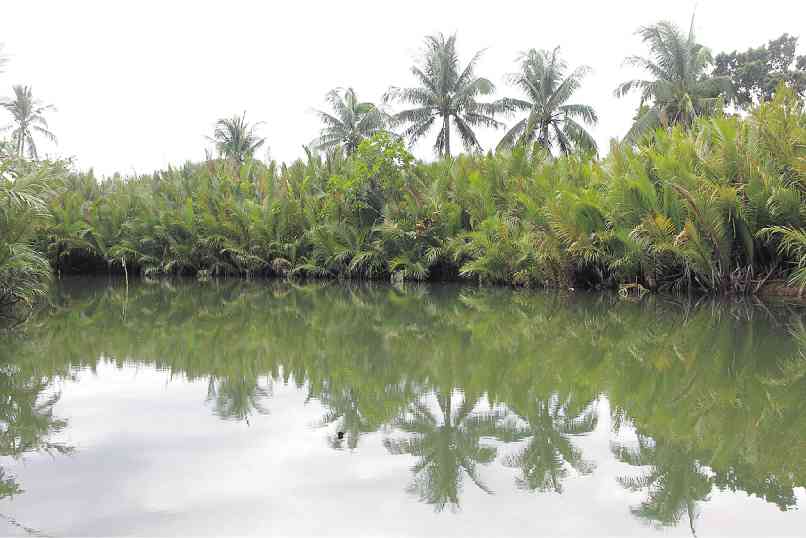
NIPA stands along the Pamplona River have given a community in Pamplona town in Cagayan province a source of clean fuel. Leilanie Adriano
FILIPINOS of this generation associate nipa palm with the rooftops of old farm huts in the middle of fields tended by their grandparents. But villagers of Cabaggan in Pamplona town, Cagayan province, have known for decades that sap extracted from nipa palm helps the neighborhood make “lambanog” (wine).
Marciano Tabia, 44, said they cannot end a day without taking lambanog, particularly during rainy days.
Unpredictable weather has made farming a gamble for the small town, so lambanog and fishing have been the community’s more feasible enterprises.
Tabia said the lambanog market is seasonal and there are times when he would barter 60 liters of lambanog for a cavan of rice.
Now comes a team of experts from the Mariano Marcos State University (MMSU) which may have discovered a new by-product of the community’s vast nipa stands along the stretch of the Pamplona River—bioethanol.
Dr. Shirley Agrupis and Dr. Fiorello Abenes, both returning scientists, have established a village-scale bioethanol facility in Cabaggan, confident it would restore nipa’s prominence in agriculture, this time as a fuel source.
Agrupis is the MMSU bioethanol project leader and principal researcher of the government-backed nipa bioethanol project.
The facility was commissioned on Aug. 12 and would be operated by the local Ibanag community.
Nipa may be the most economic and sustainable source for bioethanol production because it grows in abundance in coastal areas and estuarine habitats of the Pacific Ocean, Agrupis said.
Unlike sweet sorghum and sugarcane, she said a nipa stand would not instigate another debate as to whether food grown should be primarily consumed by the public or be converted into fuel.
Nipa can also live for more than 50 years, she added.
Producing as much as 26,000 liters of alcohol in a hectare a year, nipa is four times more productive than sugarcane, which is also a source of alcohol. A hectare of sugarcane generates 6,700 liters of alcohol.
With a capacity to produce 850 liters of bioethanol each day, the Pamplona distillery is expected to lead the way as the first local trading center of ethanol supply in the country.
The MMSU bioethanol project started in 2009. Moving from town to town to look for raw materials, the study team composed of chemists, mechanical engineers, biologists, foresters and microbiologists found itself in Cabaggan where nipa stands grow in abundance.
Nipa stands also grow naturally in the towns of Pamplona and Abulug.
Crisanta Leaño, village chief of Cabaggan and chair of the Nipa Wine Making Cooperative in Pamplona, said the bioethanol team gave them a new avenue for improving their nipa business.
Bioethanol may also change local lifestyles and reduce the number of town drunks, said Elizabeth Tabia, a member of the Cabaggan Women’s Group.

